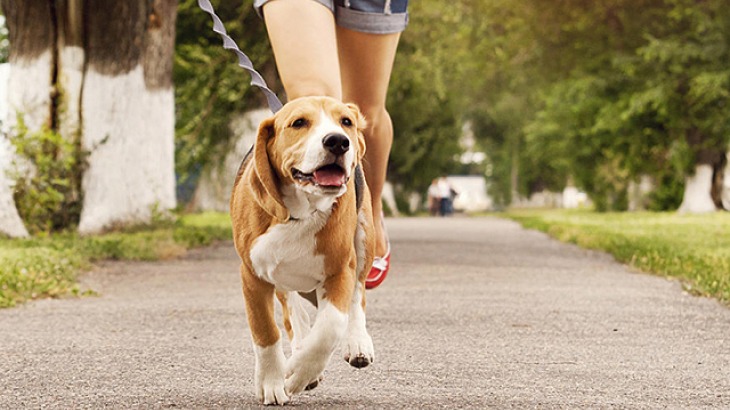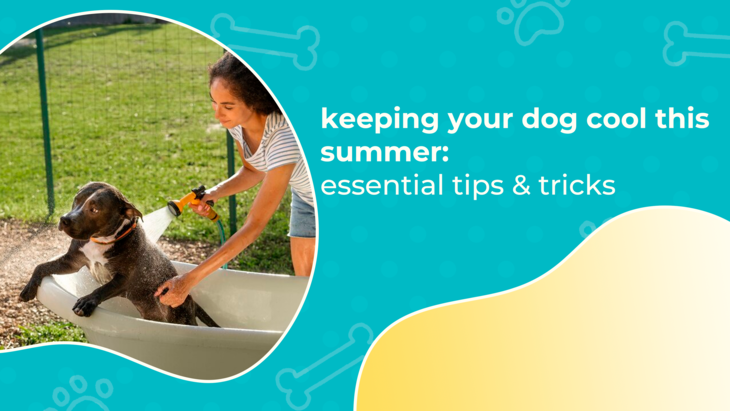Even though we all know we should walk our dogs at least once a day, studies have shown that 40% of people don't. It all comes down to motivation and developing a habit if you want to take your dog for daily walks.
Remember that walking is crucial for your dog's overall health and good exercise for both of you. Pet parents must know The Science Behind Your Dog and His Behavior.
Petscape provides pet care services to cats, dogs, fish, rabbits, and tortoises. Their top pet accommodations are Pets and Paws, Dogs and Cats, and Pet houses.
List of Helpful Tips for Walking Your Dog
1. Use a Front Clip Harness
Does your dog pull on the leash all the time? Use a front clip harness, if possible. Dog harnesses and collars with back clips encourage increased pulling. Pulling used to be a big issue for us.
When looking for a harness, look for a front clip. Here is a great loose-leash walking tutorial to get you started if you still need to spend time training your dog to walk nicely.
2. Letting Your Dog Sniff Around helps in Mental Stimulation
Making the most of your dog's time while on a walk is one of my favorite dog-walking ideas, and the simplest way to accomplish that is to let them explore. Did you know that dog walks involve more than just getting some exercise? Your dog's daily walk is typically the only opportunity to venture outside and explore.
Allow them more time to explore. It's ok if you don't want to stop every five seconds or have your dog explore your neighbor's backyard. You choose which locations are suitable (and secure) for them to explore.
Simply loosen your dog's leash for a little while to allow them to take in all the aromas when you want to give them a brief sniff break. Your dog gets excitement and information from all those odors to stay informed about what's happening in the neighborhood.
You'd be amazed to learn how much more exhausting a leisurely 20-minute neighborhood walk with sniff pauses can be for your dog. We frequently only concentrate on the physical side of walking but remember that your dog receives additional brain stimulation from smelling. Some scientists contend that we are doing them a disservice by denying the significance of smell to an animal's wellbeing.
Allowing your dog a few extra minutes to explore during walks makes them more meaningful and fulfilling for them.
3. Avoid the Use of a Retractable Leash For Dog Walks
One advice for choosing the proper leash for your dog walk is to avoid retractable leashes. Contrary to conventional leashes, retractable leashes present several unnecessary dangers. Most retractable leashes are long, making it challenging to keep your dog under control, especially in busy areas. Because those leashes are difficult to reel in, dogs can quickly run into the street. And what about retractable leash locks? They are known to detach when sufficiently pressured.
Dogs and people have been known to get hurt with retractable leashes. Additionally, the quick jerk when your dog reaches the end of the leash can knock you to the ground and hurt your dog severely.
4. Always Pick Up Your Dogs Poop
Pick up your dog's waste is a piece of further advice for dog walkers. Being a good, orderly neighbor is one of many benefits of picking up your dog's waste. Unpicked dog waste poses serious health risks to both people and animals.
And when pet waste is left on the ground those diseases, pathogens & bacteria make their way into the soil and pollute the water supply. If the pet parent cannot take complete care, they can avail Pet Care Services.
5. Don't keep Walking them on the Same Route
Although variety is the spice of life, many pet parents always take the same well-worn route.
While your dog enjoys every walk you take, canines enjoy exploring the sights and smell in various sections of the neighborhood even more.
But you can take your dog on a short trip each time you leave the house. It can be enough of a change of pace to occasionally walk down a parallel street or even to walk backward and start where you typically end up.
6. Zoning Out During Your Walk
You should be attentive when you walk your dog, even though your daily stroll with your dog can seem like a fantastic opportunity to practice walking meditation. Exercising caution when out on a stroll can prevent your dog from ingesting harmful objects like chicken bones or damaging your neighbor's cherished azaleas.
Being alert while walking your dog on a leash can also aid in those unexpected situations, such as when your dog lunges at a squirrel or comes too close to oncoming traffic. Walking with your dog is safer when you stay alert since you can practice dog safety and respond quicker in time-sensitive circumstances.
7. Carry Plenty of Water For Your Dog
Carry plenty of water for your dog if you want to walk longer than 30 minutes or in hot weather. Dogs can quickly become overheated because they have more difficulty controlling their body temperature than humans. Additionally, especially in warm weather, dogs who exercise can quickly get dehydrated because they sweat through panting. You can use a container that you already own or purchase a collapsible water bottle.
8. Carry some Treats to Keep them in Focus
Another of my go-to pieces of advice when walking the dog is always having some snacks on hand. By rewarding your dog when they walk politely, you may incorporate some training into your walk. Still, you can also utilize treats to maintain your dog's concentration in the face of distractions.
There will always be distractions while walking. If your dog is like mine, spotting a squirrel is a big deal. Keep your dog's attention in those "oh crap" circumstances by keeping some high-value treats in hand.
You don't have to carry store-bought sweets if you're as frugal as I am. Use some of the fruits & vegetables you already have, or make healthy DIY dog treats. Meat that has been chopped up will nearly always attract a dog's attention.
9. Take your Dog with Proper Identification
Ensure your dog wears ID tags every time you leave the house. Unfortunately, there are situations when dogs go missing. Be ready by making sure your dog has current identification tags on them. Since we've lost several tags over the years, I also use a personalized collar with our phone number.
Make careful to register your information if you get your dog a microchip. Anyone who scans your dog for a chip can contact you as long as their information is up to date. If you've ever read or heard about a dog going missing for months and turning hundreds of miles away, it's virtually always because of a microchip.
The least we can do for our dogs is to provide them space to safely smell, roam, and explore while we are out for our daily walks since they don't expect much of us in exchange for their unending adoration. Walking without looking at your phone and choosing the less-traveled route are two excellent methods to strengthen your friendship.
Your dog will appreciate it if you add enrichment to his walks; it's simple. Keep this walking advice in mind for a genuinely engaging time with your dog.







Post Comments